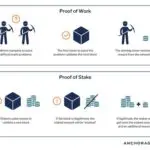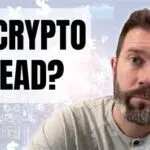It appears that the markets have interpreted this week’s favorable economic data as a signal for the Federal Reserve to initiate substantial interest rate cuts in the coming year.

The signs of significant easing in both consumer and wholesale inflation rates from their mid-2022 highs have sparked excitement among traders. The latest data from the CME Group’s FedWatch gauge suggests a potential reduction of a full percentage point by the end of 2024.
However, this outlook might be somewhat optimistic, especially given the prudent approach taken by central bank officials in their efforts to control inflation.
“The case isn’t conclusively made yet,” said Lou Crandall, chief economist at Wrightson ICAP. “We’re making progress in that direction, but we haven’t gotten to the point where they’re going to say that the risk of leveling out at a level too far above the target has gone away.”
This week featured two significant Labor Department reports, one indicating that consumer prices remained unchanged in October, while another showed a half-percent decline in wholesale prices last month.
Although the 12-month reading of the producer price index dropped to 1.3%, the consumer price index remained at 3.2%. Core CPI is still running at a 12-month rate of 4%. Additionally, the Atlanta Fed’s measure of “sticky” prices, which don’t change as often as items like gas, groceries, and vehicle prices, indicated inflation climbing at a 4.9% yearly rate.
“We’re getting closer,” Crandall said. “The data we’ve gotten this week is consistent with what you would want to see as you move in that direction. But we haven’t reached the destination yet.”
2% inflation increase
The Fed’s “destination” is a point where inflation isn’t necessarily at its 2% annual goal but is showing “convincing” progress toward reaching it.
“What we decided to do is maintain a policy rate and await further data. We want to see convincing evidence, really, that we have reached the appropriate level,” Fed Chair Jerome Powell said at his post-meeting news conference in September.
While Fed officials haven’t specified how many months of easing inflation data it will take to reach that conclusion, the 12-month core CPI has fallen each month since April. The Fed prefers core inflation measures as a better gauge of long-run inflation trends.
Traders seem to have more certainty than Fed officials at this point.
Futures pricing on Wednesday indicated no chance of additional hikes in this cycle, with the first quarter percentage point cut coming in May, followed by another in July, and likely two more before the end of 2024, according to the CME Group’s gauge of pricing in the fed funds futures market.
If correct, this would take the benchmark rate down to a target range of 4.25%-4.5% and would be twice as aggressive as the pace Fed officials penciled in back in September.
Markets will watch with extra fervor how officials react at their next policy meeting on Dec. 12-13. In addition to a rate call, the meeting will see officials make quarterly updates to their “dot plot” of rate expectations, as well as forecasts for gross domestic product, unemployment, and inflation.
However, pricing of Fed actions can be volatile, and there are two more inflation reports ahead before that meeting. Wall Street could find itself disappointed in how the Fed views the near-term policy course.
“They’re not going to want to signal that now is the time to start talking about decreases in interest rates, even if fed funds futures already have that incorporated,” former Boston Fed President Eric Rosengren said Wednesday on CNBC’s “Squawk Box.”







